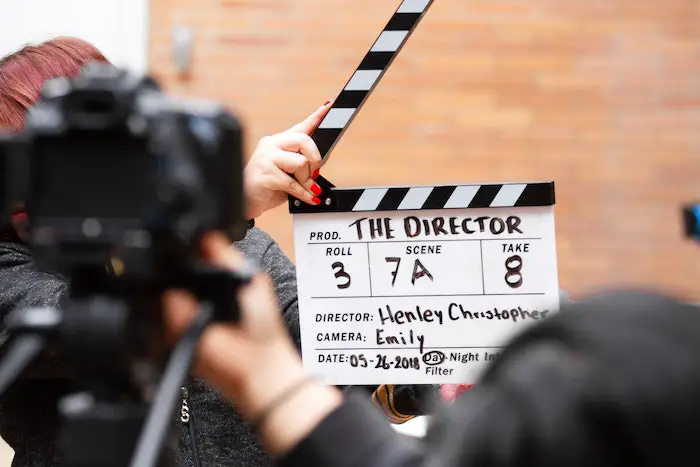
Writing is actually not an easy job. If you’ve ever had to purchase a cheap essay, you’d know how exhausting can it be to find a top-notch writer when you cannot cope with all the things yourself. So, sometimes we just need to be lent a hand. There are times when we are stuck somewhere along our writing journey and don’t know how to finish it.
At least for essays it’s easy. You can simply go on essay pro.com and find horrific writers who are all there to help you out. Then you’d be free to focus on stuff that are also in the need to be done as soon as possible.
But when it comes to a film synopsis, it’s not that easy. After all, you’ve written the movie yourself. Now, there isn’t a better person who can write a more high-quality synopsis. That is, if you know how to craft out the best piece. That is why we are here to help you today with our how-to guide on master piecing your next film synopsis when you have a screenplay for sale. Hopefully, we’d be able to put you one step further onto closing that great deal.
What is That and Why to Write It?
Well, put shortly, the film synopsis is a one-page text summary of the movie you’ve written. There you’d need to put not only the title and the genre, but also the explanation of the storyline, along with the characters and the main plot points.
The synopsis comes to boost your chances of securing a deal on your screenplay. It’s used by agents and managers, and studio executives to see whether your film idea interests them and whether they’d want to buy it. After all, they don’t have the time to read all of your screenplay. So, the synopsis helps them sort through what they want or don’t want to fully read. Thus, you need to get the synopsis of your movie right if you want to sell it.

Header and Contact Data
To begin with, you’d need to write the title and the word “Synopsis” at the top. Right below that put in the gender. Then place your contact dada, such as name, email, address, phone number.
Logline
Now comes the logline. It consists of one-two sentences that sum up the plot really briefly. There you put who the main character is and what are they overcoming. Add the reason they are dealing with that, too. If you wish, then you can put why do you consider your screenplay worthy of agents’ and filmmakers’ time.
Introduction to the Story
Afterwards, you’d need to write a single paragraph that introduces your main character. It includes who that is, their whereabouts, when is the story taking place, and why are you telling this story, exactly. Include not only your protagonist, but their love interest, their allies, and, of course, their antagonist.
Summarize Act 1
In the space of three paragraphs to no more than half a page put simply who are the characters and what main conflict are they facing. Here, in Act 1, you are setting the scene, so you have to put in a brief summary of that setting. Then, also put the challenges of your character in the beginning, and put in the catalyst that sets the story going.
Summarize Act 2
In about a page put in the information about the plot twists that are driving your story. Also, remember to include what challenges are you putting your characters into.
In Act 2 your story generally unravels itself and tenses up. It’s the place where you need to have the protagonist working towards their desired end result. Here they also face challenges, sometimes seemingly some without an obvious solution. What you need here is a good summary of all those points and twists that the character is going to face.
In this summary of Act 2 you also need to put in what are the other characters in your screenplay. Here you should, of course, include the protagonist, but also their enemies and friends. Explain briefly or more elaborately the central conflict around which the story revolves.
Summarize Act 3
In around three paragraphs to half a page explain the end of the conflict and the circumstances around your characters afterwards. Tie up the ends that are still hanging loose. Keep in mind to not worry about revelations – the agents, the filmmakers, and other relevant people will need to know what is going to happen and this is where you can show them once more why your screenplay will be a hit.

Tips
First, don’t go overboard on writing the synopsis. It needs to stay brief and not exceed 2-3 pages of length. It has to be easy and fast to read but you’d also want to make sure you’ve put in all the details that should be known.
Also, two important aspects are – present tense, third person. Even for stories set in the past, write in present tense. Don’t use first person, though. Use third person perspective, instead.
When it comes to formatting, you’d also want single spacing, no indents in the beginning of paragraphs, and more space in between the different paragraphs. You’d also do better if you use some sort of a simple font, better in size 12, unless otherwise specified.
Lastly, remember to only describe the main points and characters. Don’t go into the subplots. Don’t delve on the secondary characters. They are something that is important later on, not in those first few minutes. Now the most important thing is to show that the major points of your story are worth telling; that the main character of yours is worth meeting with. This is what they need to see at first in order to decide whether they’d want to get more in-depth on your screenplay.
Conclusion
Okay, now we’ve come to the conclusion of our article on writing the best film synopsis. In the end of this short, but hopefully useful, journey, we’d want to warrant you one last advice. That is, get ready for edits. All writers, no matter the genre and the area they are writing in, should be prepared that their manuscript or screenplay, or other writing piece will get into the editorial’s hands. Don’t be afraid of that – it’s going to help make your writing much better. Also, keep reminding yourself that now you are one huge step further on the way of seeing your masterpiece on the big screen or on the bookstore shelves. We wish you all the best with your future projects and we hope we were able to help you get one step further on your journey.





